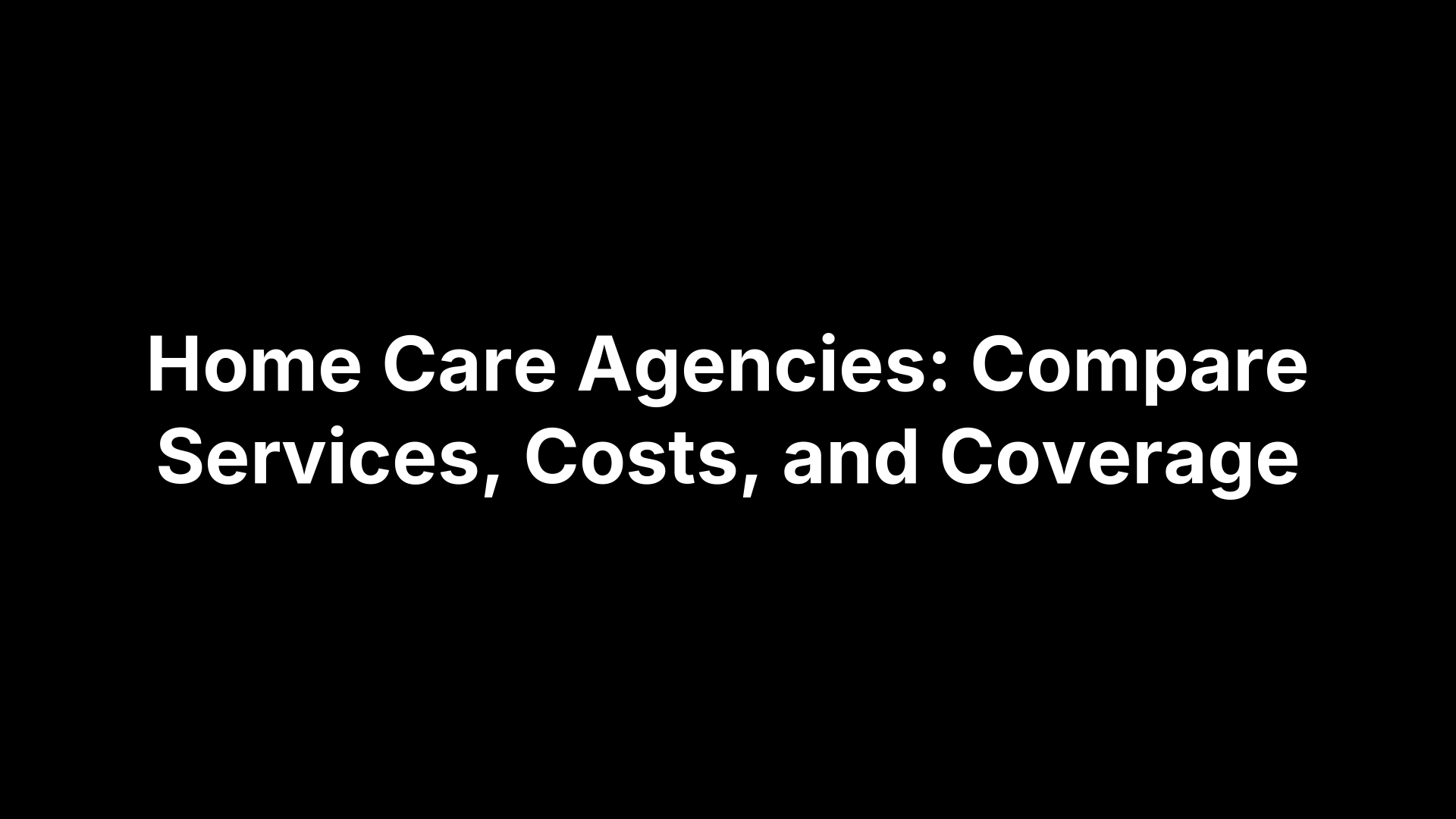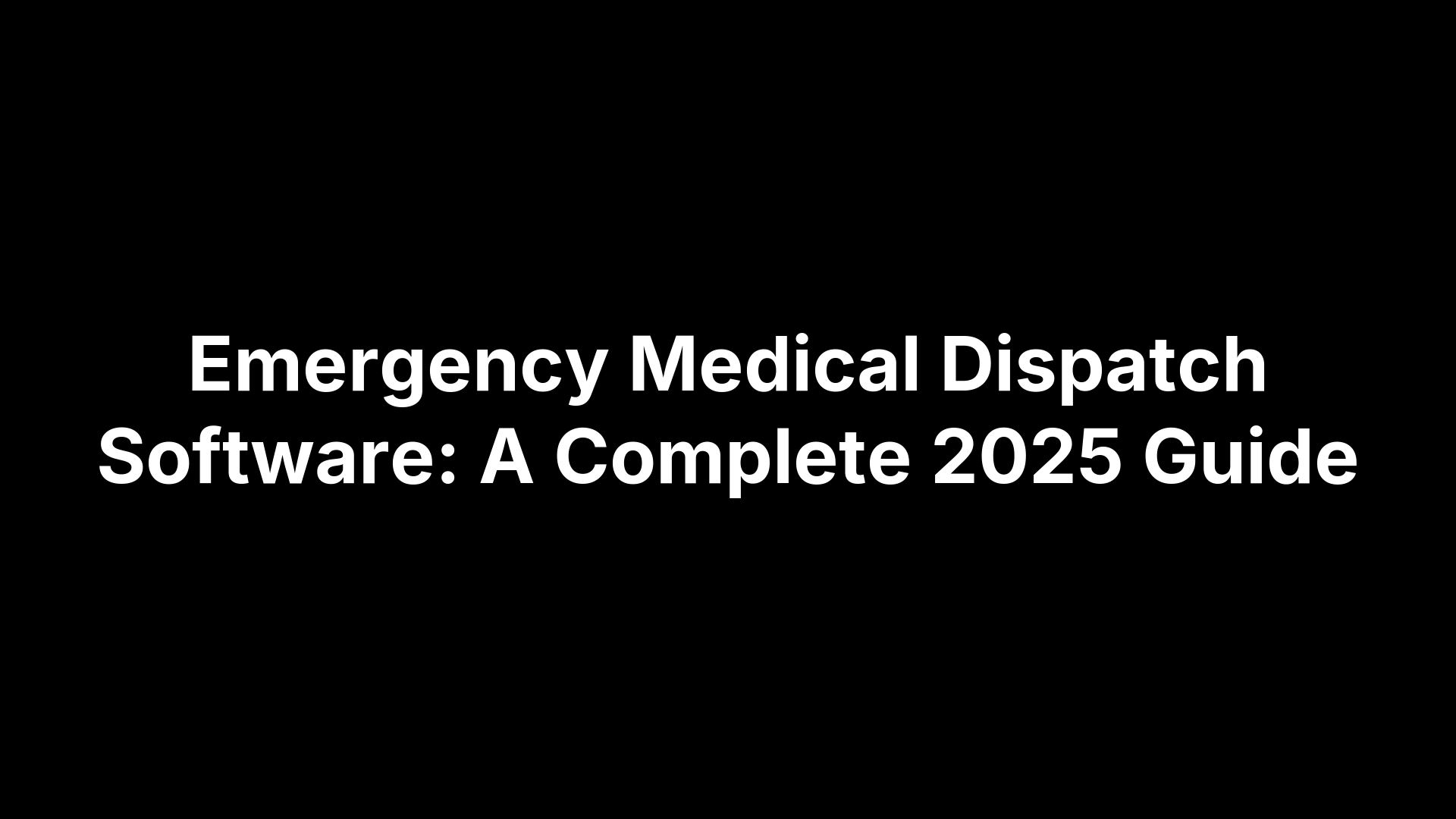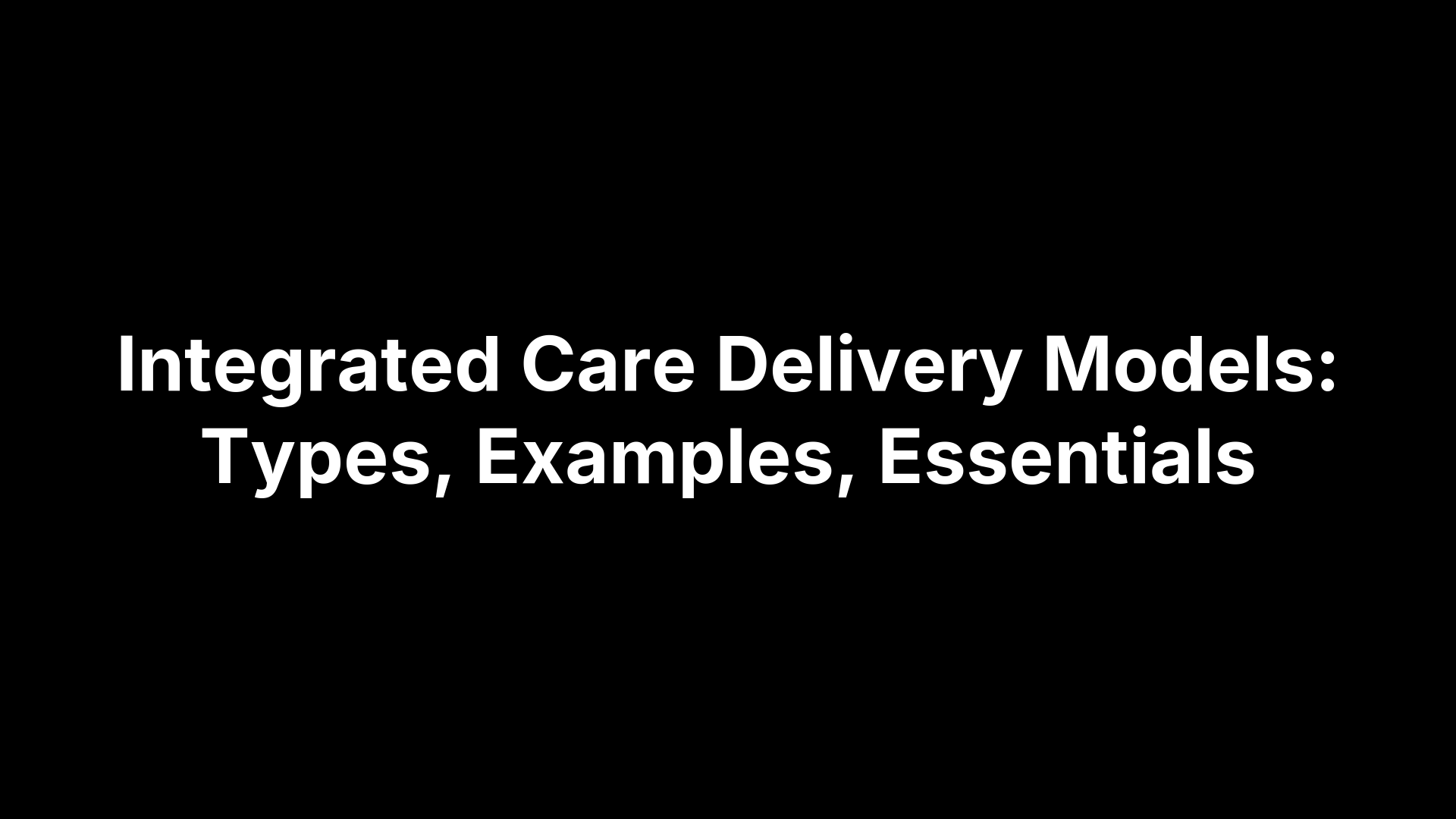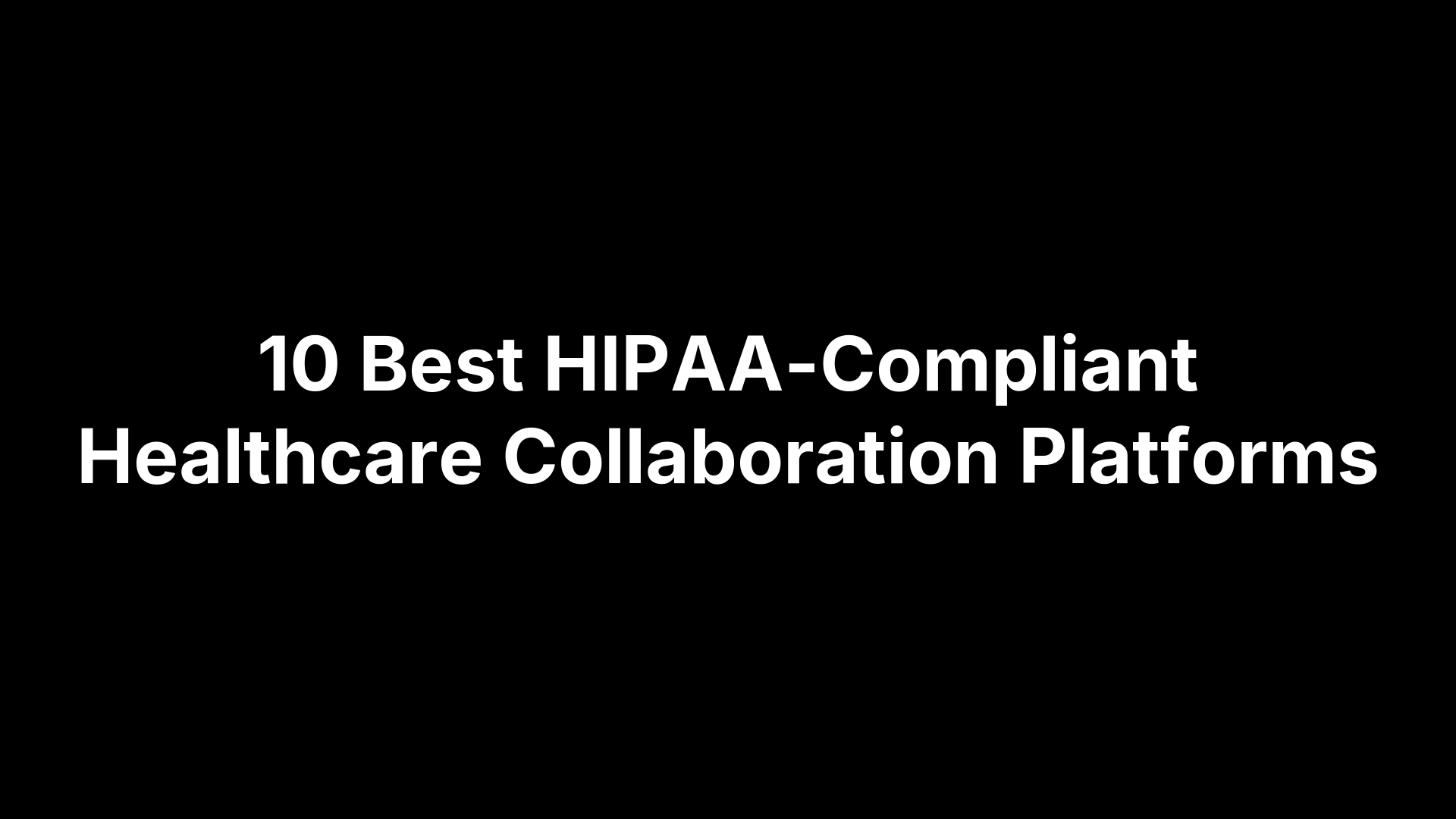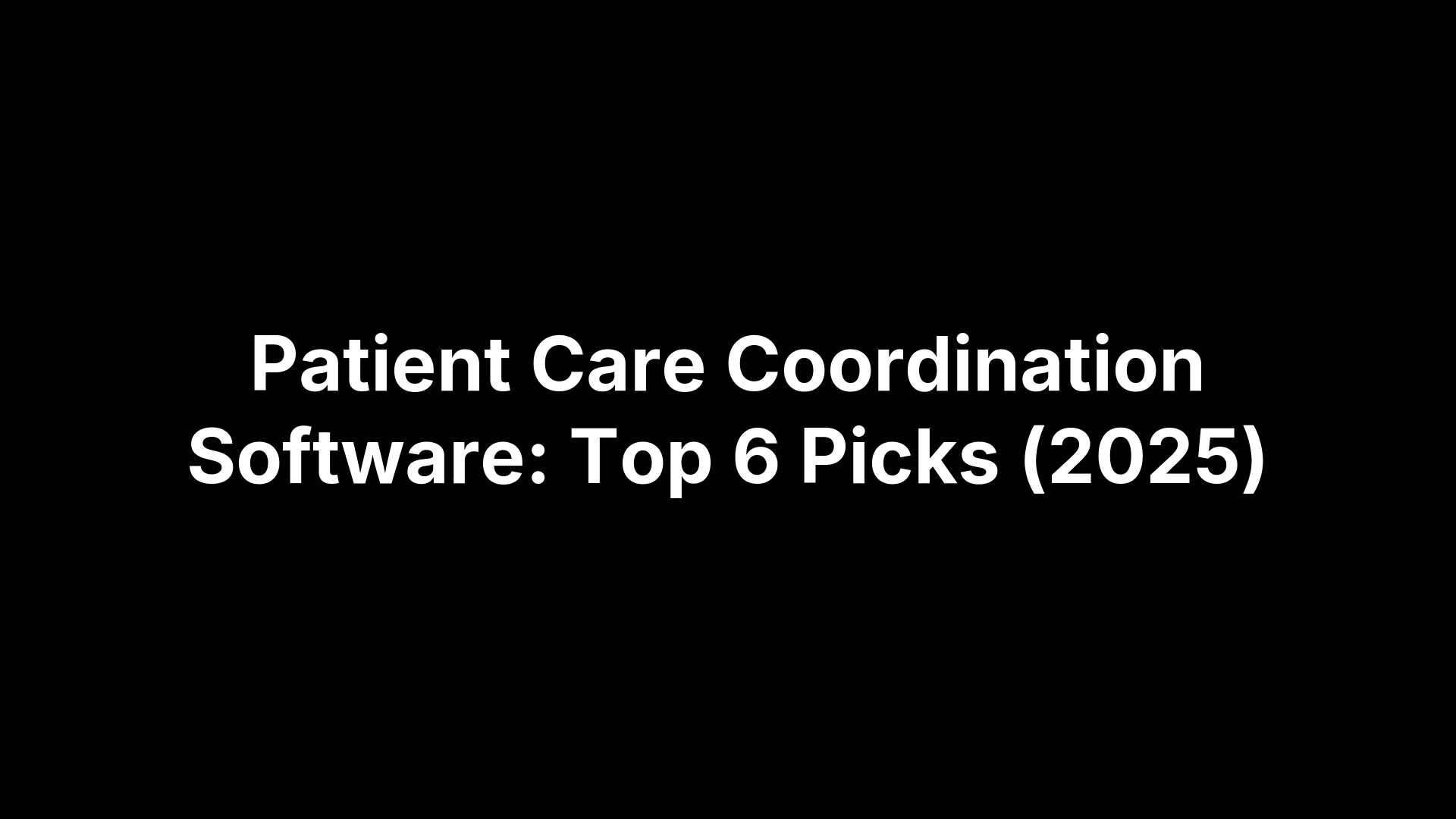Home Care Agencies: Compare Services, Costs, and Coverage
Home Care Agencies: Compare Services, Costs, and Coverage
Home care agencies are businesses that send trained caregivers to your home to help with daily tasks, medical needs, or companionship. Some provide basic help like bathing and meal prep. Others offer skilled nursing care from licensed professionals. You hire the agency, and they handle hiring, training, and scheduling the caregivers who work with you or your loved one.
Finding the right agency takes research. You need to compare what services they offer, how much they charge, and whether your insurance will cover the costs. This guide walks you through what home care agencies do, how to pick one that fits your needs, what services you can expect, typical pricing, and how Medicare and private insurance handle coverage. By the end, you'll know how to make an informed choice about home care.
Why home care agencies matter
Home care agencies let your loved one stay in their own home while getting professional care and supervision. Most people prefer recovering or aging at home rather than moving to a facility. Agencies provide trained caregivers who understand medical protocols, safety procedures, and how to handle emergencies. This means you get quality care without turning your life upside down or forcing someone into an unfamiliar environment.
Staying at home with professional support improves recovery outcomes and maintains dignity for people who need ongoing assistance.
Your family gains peace of mind knowing that qualified caregivers show up on schedule, follow a care plan, and report any health changes. Agencies handle the hard parts: background checks, training requirements, liability insurance, and backup coverage when a caregiver calls in sick. You avoid the legal and tax complications of hiring someone directly. If a caregiver doesn't work out, the agency sends a replacement instead of leaving you scrambling.
Safety matters most when someone needs help with medication, mobility, or medical equipment. Licensed home care agencies train their staff to spot warning signs like falls, infections, or medication errors. They coordinate with doctors and hospitals to keep everyone informed. This level of oversight reduces hospital readmissions and catches problems before they become emergencies. For families juggling work and caregiving, agencies provide consistent, reliable help that makes long-term care sustainable.
How to choose a home care agency
Choosing home care agencies starts with checking their credentials and reputation. You want an agency that holds proper state licensing and meets all local regulations. Ask if they carry liability insurance and workers' compensation coverage. Read online reviews from families who used their services, but look beyond star ratings to see specific complaints or praise about reliability, caregiver quality, and how they handle problems. Schedule interviews with at least three agencies before deciding.
Check licensing and accreditation
Your state requires home care agencies to hold specific licenses that prove they meet minimum standards. You can verify licenses through your state's health department website or by calling their consumer protection office. Look for agencies with accreditation from organizations like The Joint Commission or CHAP (Community Health Accreditation Partner). Accreditation means they passed extra quality checks that go beyond basic licensing requirements. Agencies with these credentials follow stricter protocols for hiring, training, and supervising caregivers.
Accredited agencies demonstrate commitment to quality standards that protect you and your loved one from substandard care.
Ask about caregiver screening
Find out exactly how the agency screens and trains their caregivers. They should run criminal background checks, verify references, and confirm any required certifications before hiring anyone. Ask what ongoing training they provide, especially for specialized care like dementia support or wound care. You need to know if caregivers receive regular supervision from nurses or social workers who monitor quality. Request information about their backup plan when your regular caregiver can't make it. Reliable agencies have systems to ensure you never go without coverage.
Review services and availability
Make sure the agency offers the specific services you need right now and might need later. Some only provide companion care while others handle complex medical tasks. Check if they work the hours and schedule that fit your situation, including nights, weekends, or 24-hour care. Ask about their minimum visit requirements because some agencies won't send caregivers for less than four hours per visit. Find out how quickly they can start services and how much notice they need to adjust your care plan. Get pricing details upfront so you can budget accurately and avoid surprise charges.
Types of home care services to compare
Home care agencies offer different levels of care depending on your medical needs and daily living requirements. You'll find personal care services that help with basic tasks and skilled nursing services that provide medical treatment. Understanding these categories helps you match your needs to the right agency. Some agencies specialize in one type while others provide a full range of options under one roof.
Personal care and companion services
Personal care aides handle daily living activities that don't require medical training. They help with bathing, dressing, grooming, toileting, and moving around the house safely. These caregivers prepare meals, do light housekeeping, run errands, and provide medication reminders (though they can't administer medications). Companion care focuses on social interaction, keeping your loved one engaged through conversation, activities, and outings. This level of care works well for people who remain mostly independent but need supervision, help with household tasks, or someone to prevent isolation.
Companion and personal care services maintain quality of life while supporting independence in familiar surroundings.
Skilled nursing and medical care
Skilled nursing brings licensed healthcare professionals into your home to deliver medical treatment. Registered nurses (RNs) and licensed practical nurses (LPNs) administer medications, manage wounds, monitor vital signs, operate medical equipment, and handle complex care needs like IV therapy or tube feeding. Physical therapists, occupational therapists, and speech therapists provide rehabilitation services after surgery, strokes, or injuries. These professionals work under doctor's orders and coordinate with your medical team to track progress and adjust treatment plans. You need this level of care when recovering from hospitalization, managing chronic conditions, or dealing with serious illnesses that require ongoing medical monitoring at home.
What home care usually costs
Home care agencies charge by the hour in most cases, and rates vary widely based on your location, the type of care you need, and how many hours you book. Personal care aides typically cost between $25 and $35 per hour in most U.S. markets, while skilled nursing services run $50 to $100 per hour or more. You'll pay less per hour when you commit to longer shifts or 24-hour care packages. Agencies in major cities charge premium rates compared to rural areas, and weekend or holiday care adds extra fees to your bill.
How care level affects pricing
Companion care costs the least because it requires no medical training or certification. You'll pay $20 to $28 per hour for someone to provide company, help with meals, and handle light household tasks. Personal care services that include bathing, dressing, and mobility assistance cost $25 to $35 per hour since these tasks require more training and responsibility. Agencies charge $50 to $100 per hour for skilled nursing because registered nurses and licensed therapists bring medical expertise and can perform complex procedures. Specialized care for dementia, hospice support, or intensive medical needs pushes rates even higher, sometimes exceeding $100 per hour in expensive markets.
The more medical training and certification your caregiver needs, the more you'll pay per hour for their services.
Additional costs to budget for
Home care agencies often require minimum visit lengths of two to four hours, which means you pay for the full block even if you only need one hour of help. Some charge initial assessment fees ranging from $100 to $300 to evaluate your needs and create a care plan. You might pay higher rates for rush scheduling when you need a caregiver to start immediately. Agencies add surcharges for holidays, overnight shifts, and weekend coverage because these hours are harder to staff. Factor in transportation costs if your caregiver needs to drive your loved one to appointments. Most agencies don't require long-term contracts, but month-to-month arrangements cost more per hour than contracts spanning six months or longer.
How Medicare and insurance cover home care
Medicare covers home health care services only when your doctor orders them and you meet specific eligibility requirements. You must be homebound, meaning leaving home requires considerable effort, and you need intermittent skilled nursing care, physical therapy, or speech therapy. Medicare pays 100% of approved home health services and 80% of durable medical equipment costs. Your coverage does not include 24-hour care at home, meal delivery, or personal care services when that's the only care you need. Understanding these rules helps you avoid surprise bills and plan for gaps in coverage.
What Medicare covers for home care
Medicare Part A and Part B cover skilled nursing visits, physical therapy, occupational therapy, and speech therapy delivered by Medicare-certified home care agencies. Your doctor must document that you're homebound and create a care plan that requires skilled medical services. Coverage includes part-time or intermittent visits from registered nurses, licensed therapists, and home health aides who provide personal care related to your skilled nursing needs. Medicare does not pay for companion care, full-time nursing, or personal care aides when you only need help with daily activities like bathing and dressing.
Medicare only covers home health services when you need skilled medical care, not assistance with daily living alone.
The coverage ends once you no longer need skilled services, even if you still struggle with daily tasks. You pay nothing for covered home health visits, but Medicare requires prior authorization and regular reviews to confirm you still meet eligibility criteria. Your agency must document progress notes and coordinate with your doctor to keep services approved.
Private insurance and Medicaid options
Private health insurance plans vary widely in home care coverage and limitations. Some employer plans cover home health services similar to Medicare, while others exclude it entirely or require high deductibles. Check your policy documents for specific coverage details, pre-authorization requirements, and network restrictions. Many plans require you to use agencies in their provider network or face higher out-of-pocket costs. Medicaid covers personal care services that Medicare doesn't, including help with bathing, dressing, and meal preparation for eligible low-income individuals. Each state runs its own Medicaid program with different rules about covered services, caregiver qualifications, and how many hours you can receive. Contact your state Medicaid office to learn about waiver programs that expand home care benefits beyond basic coverage.
Final thoughts
Choosing home care agencies requires careful research and comparison of services, costs, and coverage options. You need to verify licensing, understand what your insurance covers, and match the agency's offerings to your specific care needs. Start your search early because quality agencies fill up fast, especially in busy markets. Ask detailed questions during interviews and trust your instincts about caregiver compatibility and agency responsiveness.
Healthcare providers who coordinate patient transitions and home care services face complex logistics challenges. Managing multiple agencies, scheduling caregivers, and tracking service delivery takes significant administrative time. VectorCare streamlines patient logistics coordination by connecting hospitals, home health agencies, and other service providers through a single platform. This unified approach cuts scheduling time, reduces costs, and ensures patients receive timely care after discharge.
Whether you're a family seeking home care or a provider managing patient services, the right systems and partnerships make all the difference in delivering quality care at home.
